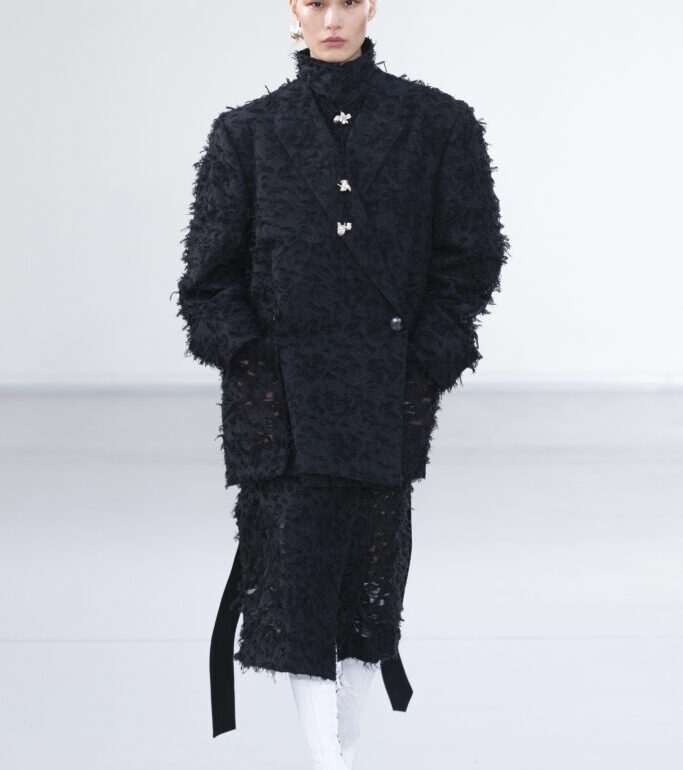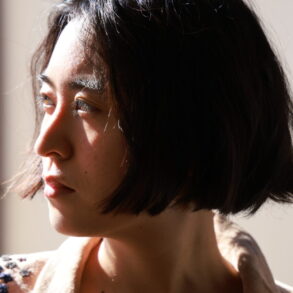QASIMI AW25: A Collaboration Rooted in Art
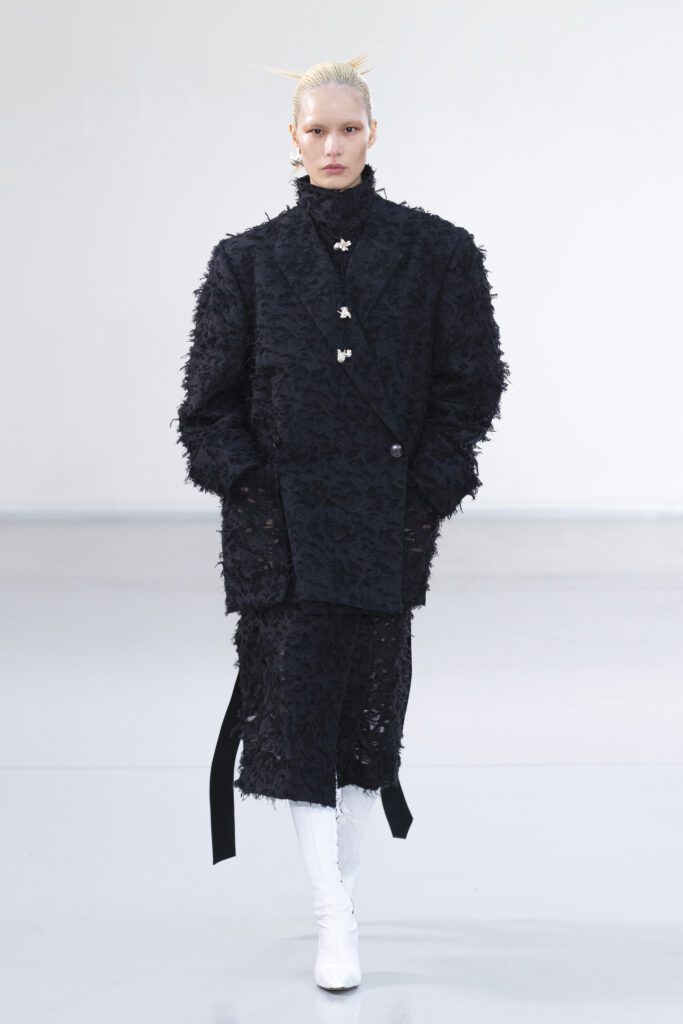
In a world increasingly marked by division, collaboration emerges as a vital force for unity. For Autumn/Winter 2025, Hoor Al Qasimi continues her mission of leveraging fashion to spotlight and uplift creatives from around the globe. This season, she partners with acclaimed Māori artist Emily Karaka, whose evocative works delve into themes of ancestral history, language, and connection, while addressing critical issues such as land loss, territorial disputes, and political oppression.
Karaka’s large-scale canvases, alive with vibrant colors, expressive brushstrokes, and ancestral Māori phrases, celebrate the resilience of her people. These elements serve as the foundation for QASIMI’s AW25 collection, which seamlessly blends art and fashion to tell stories of heritage, resistance, and solidarity.
A Dialogue Between Art and Design
Karaka’s artistry acts as the seed from which the AW25 collection blooms, informing the fluid and functional designs that are QASIMI’s hallmark. Louche shirts paired with loose trousers echo traditional Middle Eastern and North African silhouettes, while slouchy windbreakers and worn-in hoodies add a sense of relaxed sophistication. Tailored pieces with curved shoulders and modular elements—zips, studs, buttons, and adjustable seams—allow wearers to transform garments, making them uniquely their own.
As Hoor Al Qasimi explains, “Renowned Māori painter Emily Karaka’s use of color, language, and text to depict Māori land rights and historic treaties was the inspiration behind the AW25 collection. Through bold prints, intricate embroideries, and changeable silhouettes, this collection reflects not only the ongoing struggle for Māori rights but also other Indigenous struggles around the world. Karaka often references other oppressions and colonial histories as an expression of solidarity—something we all need to do at this present time.”
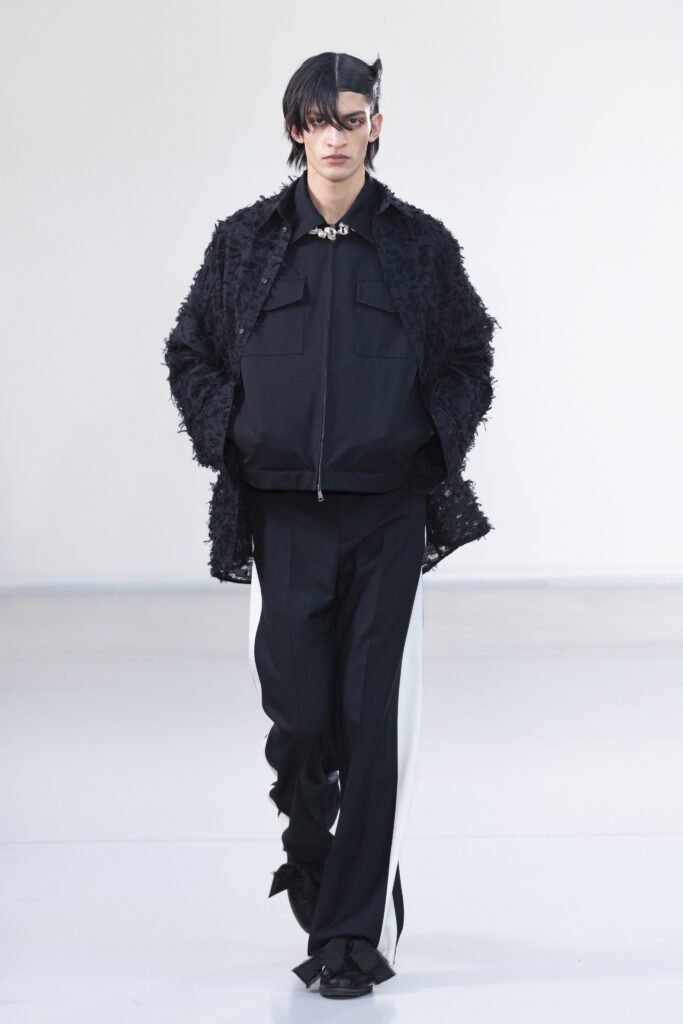
Textures and Stories Interwoven
The AW25 palette reflects the depth of Karaka’s work, featuring rich browns and deep sand tones punctuated with flashes of indigo, maroon, and golden turmeric. The texture is key, as luxurious jacquards, frayed seams, and trompe l’oeil patterns that mimic mohair create visual and tactile intrigue.
Karaka’s brushstrokes and etchings are reinterpreted throughout the collection, appearing in technicolored embroidery, woven motifs, and textural details. Words of resistance and ancestral phrases adorn garments, transforming each piece into a wearable work of art. As Hoor Al Qasimi integrates Karaka’s visuals into the designs, the collection becomes a tapestry of intertwined stories, reflecting both the artist’s heritage and broader Indigenous struggles.
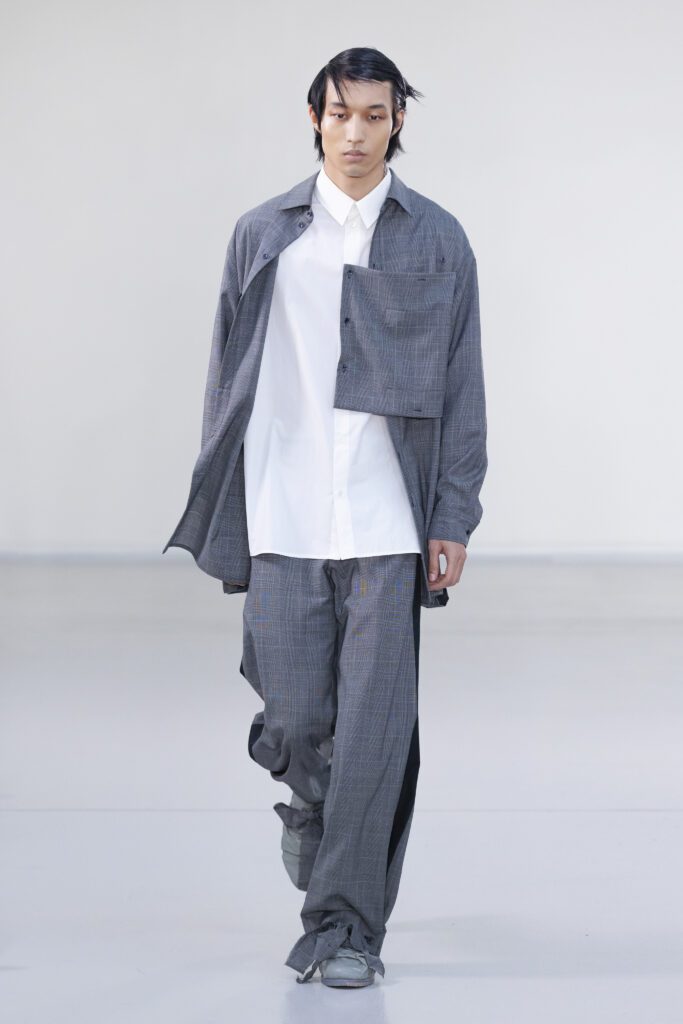



A Shared Creative Language
At the heart of the collaboration lies Karaka’s seminal painting, He Kakano Ahau – Lament (2014–2015), which translates to “I Am a Seed.” The work embodies themes of identity, resilience, and connection to lineage, incorporating lyrics from a traditional Waiata (song):
“And I can never be lost, I am a seed born of greatness;
Language is my strength, an ornament of grace;
Descended from a line of chiefs, He Kakano Ahau.”
Karaka describes the painting as one of her most significant works. “The red, black, and white on the blood-red background, and the intertwining blue strands represent the waves of the sea and rivers on which Māori traveled from Raiatea to Aotearoa, New Zealand,” she shares. “It also resembles the Taneko (weaving) I did as a teenager.”
This imagery, steeped in ancestral memory and cultural pride, resonates deeply with QASIMI’s AW25 collection. The result is a dialogue between artist and designer that transcends language, finding commonalities in their creative processes and shared commitment to storytelling.
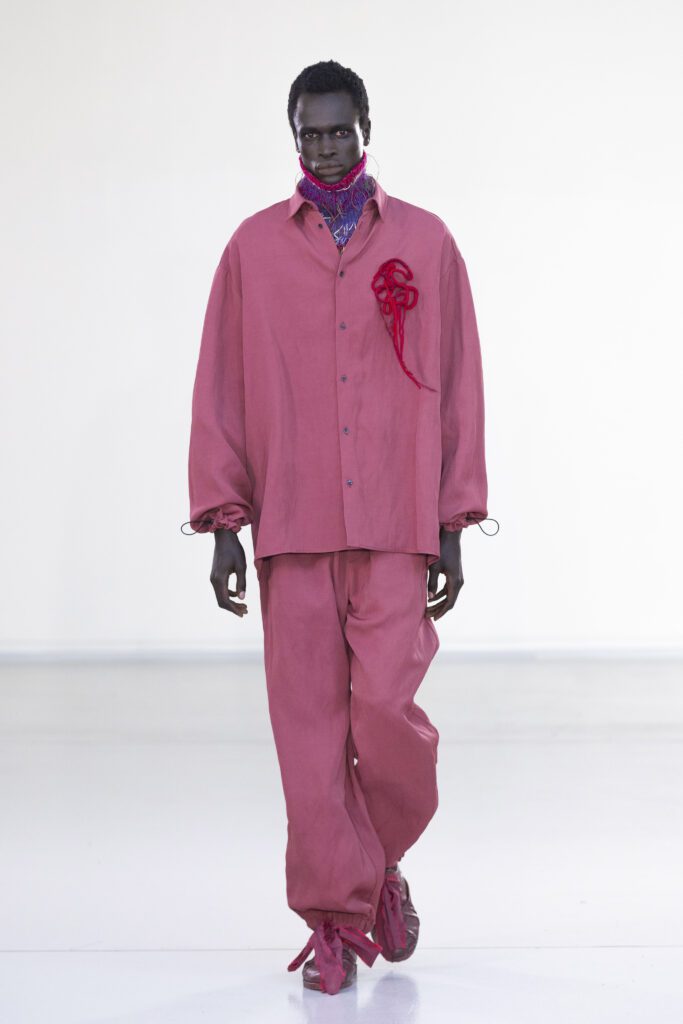



Fashion as a Medium for Solidarity
The AW25 collection is more than a fashion statement; it is a testament to the power of art to inspire change and foster unity. By weaving Karaka’s work into her designs, Hoor Al Qasimi not only celebrates Māori heritage but also draws attention to the struggles of indigenous peoples around the world.
As Hoor notes, “This collection reflects the ongoing struggle for Māori rights, but it also amplifies the voices of other marginalized communities. Fashion, like art, has the power to communicate and connect, and it is our responsibility to use it for good.”
Through bold prints, transformative silhouettes, and tactile textures, QASIMI’s AW25 collection carries a message of resilience and solidarity—a call to recognize and celebrate the beauty of cultural diversity. Each piece becomes a canvas for Karaka’s artistry and a vessel for her stories, ensuring that the resilience of her people reaches far beyond the runway.
Photo credit: Gregoire Avenel
This post was originally published on this site be sure to check out more of their content



